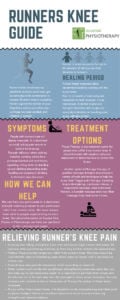Knee arthritis is a serious condition that gets worse with age. Arthritis is an inflammation of one or more joints. The common symptoms include pain, swelling and stiffness. Any joint in the body can be affected by arthritis, but the knee is the most common one. Knee arthritis can be painful and make it difficult for a person to do everyday activities like walking or climbing stairs.
This condition can become severe for some people. Does physiotherapy help knee arthritis? There is no cure for arthritis, but treatments like physiotherapy can help manage the pain, reduce swelling and stiffness, and improve knee function. In this article, we will discuss how physiotherapy can help with knee arthritis.
What is Knee Arthritis?
Arthritis is a condition that causes pain, swelling and stiffness in the joints. It can affect the large joints in the body, which is why it is more common in the knees. Knee arthritis can progress and become more severe. Hence, it is important to take measures that can help ease the symptoms and reduce the chances of getting more severe.
Types of Knee Arthritis
There are many types of arthritis, but these are the more common ones:
Osteoarthritis
Osteoarthritis is a common type of arthritis that affects the knees. It occurs due to wear and tear leading to the degeneration of the cartilage in the knee joint. This condition commonly affects people aged 50 years or above, however it can also affect younger people.
Cartilage is a connective tissue that acts as a cushion between the bones of joints. Osteoarthritis wears away the cartilage in the knees. This leads the cartilage to become frayed and there is very little space left between the bones. When the bones rub against one another it can be very painful. Osteoarthritis can gradually worsen and cause more damage.
Rheumatoid Arthritis
Rheumatoid arthritis is a chronic disease that affects multiple joints including the knee. This condition is symmetrical which means it will affect the same joint on both sides. In this condition, the synovial membrane which covers the knee joint starts to swell. This can cause pain and stiffness.
Rheumatoid arthritis is an autoimmune disease. In an autoimmune disease, the immune system attacks and damages its own tissues. Normal tissues like cartilage and ligaments are damaged.
Posttraumatic Arthritis
Posttraumatic arthritis develops after an injury to the knee. Injuries like a broken or ligament tear may damage the joints. The wear and tear of the knee post any injury can eventually lead to arthritis.
Symptoms
Arthritis can lead to pain and inflammation in the knee joint. This causes swelling and restricted movement of the knee. The following symptoms can occur:
- Stiff and swollen joint
- Difficulty with knee movement
- Pain while getting up or walking
- Vigorous activity triggers pain
- The knee may lock or click during movement
- Weakness in the knee
How Does Physiotherapy Help Knee Arthritis?
Like discussed above there is no definite cure for arthritis. However, physiotherapy can help you alleviate symptoms and improve the knee function. It can reduce stiffness, swelling and bring movement back to the knee joint. Physiotherapy can also make it easy to sit, stand, walk, bend, and do other activities that are difficult to perform due to arthritis.
Active and passive physiotherapy treatments can help deal with knee arthritis. Before you seek any form of treatment it is important to get a proper diagnosis from your doctor. Ensure that you seek medical attention when you start experiencing any of the symptoms. The doctor will conduct a medical examination and give you a diagnosis of your condition.
A physiotherapist will also examine your condition before carving out a treatment plan for you. Let's take a look at some types of physiotherapy treatments that a physiotherapist may use for knee arthritis.
Treatments for Knee Arthritis
Strengthening exercises
A physiotherapist will show you and help you perform exercises that will strengthen your muscles. These leg exercises can help make the knee joints stronger and improve movement.
Exercises to improve flexibility
One issue patients with knee arthritis face is restricted and painful movement of the knee joints. This can make it difficult to perform everyday activities. Physiotherapists help you perform flexibility exercises to improve movement of your knee joints. These exercises will be recommended for you to do daily at home as well. Doing these exercises everyday will help make your knees more flexible.
Hydrotherapy
Hydrotherapy also known as aquatic therapy uses water to decrease your knee arthritis symptoms. Hydrotherapy can help alleviate pain and increase movement of knee joints.
Ultrasound
Ultrasound uses waves to help treat pain and muscle spasms.
Electrical stimulation
A physiotherapist will use mild electrical currents to reduce pain in the knees.
Cold therapy
Physiotherapists may use a cold compress on your knee joints. This can help reduce swelling.
Heat therapy
Heat therapy promotes circulation and helps decrease swelling in the knee joints. In a physical therapy session, your physiotherapist may use a heating pad to boost circulation.
Depending on your condition and its severity, your physiotherapist will come up with a treatment plan that can do various active and passive treatments to deal with arthritis. Ensure that you talk to your doctor before going for physical therapy. Physiotherapy can be very beneficial to alleviate knee arthritis symptoms. It also keeps this condition from further causing more damage to your knees.

